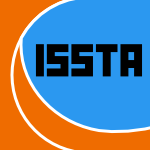99 papers:
 VLDB-2015-FanRMGW #comprehension #consistency
VLDB-2015-FanRMGW #comprehension #consistency- Understanding the Causes of Consistency Anomalies in Apache Cassandra (HF, AR, MM, WMG, BW), pp. 810–821.
 SANER-2015-HeroldEBCC #detection #modelling
SANER-2015-HeroldEBCC #detection #modelling- Detection of violation causes in reflexion models (SH, ME, JB, SC, MÓC), pp. 565–569.
 HCI-UC-2015-Wittenberg #automation #industrial #question #requirements #user interface
HCI-UC-2015-Wittenberg #automation #industrial #question #requirements #user interface- Cause the Trend Industry 4.0 in the Automated Industry to New Requirements on User Interfaces? (CW), pp. 238–245.
 HIMI-IKC-2015-Bretschneider-Hagemes #development #low cost #mobile #multi #question #simulation
HIMI-IKC-2015-Bretschneider-Hagemes #development #low cost #mobile #multi #question #simulation- Development of a New Low Cost Driving Simulation for Assessing Multidimensional Task Loads Caused by Mobile ICT at Drivers’ Workplaces. — Objective-Fidelity Beats Equipment-Fidelity? (MBH), pp. 173–179.
 HIMI-IKC-2015-HamaguchiMTKN #design #generative #matrix #using
HIMI-IKC-2015-HamaguchiMTKN #design #generative #matrix #using- A Method for Generation and Check of Alarm Configurations Using Cause-Effect Matrices for Plant Alarm System Design (TH, BM, KT, NK, MN), pp. 549–556.
 HIMI-IKC-2015-WangN #analysis #identification #matrix
HIMI-IKC-2015-WangN #analysis #identification #matrix- Dot Matrix Analysis of Plant Operation Data for Identifying Sequential Alarms Triggered by Single Root Cause (ZW, MN), pp. 152–158.
 ICML-2015-Lopez-PazMST #learning #towards
ICML-2015-Lopez-PazMST #learning #towards- Towards a Learning Theory of Cause-Effect Inference (DLP, KM, BS, IT), pp. 1452–1461.
 ICML-2015-ScholkopfHWFJSP #fault
ICML-2015-ScholkopfHWFJSP #fault- Removing systematic errors for exoplanet search via latent causes (BS, DWH, DW, DFM, DJ, CJSG, JP), pp. 2218–2226.
 ICML-2015-ShajarisalesJSB #linear
ICML-2015-ShajarisalesJSB #linear- Telling cause from effect in deterministic linear dynamical systems (NS, DJ, BS, MB), pp. 285–294.
 SEKE-2015-DingLTV #architecture #communication #empirical
SEKE-2015-DingLTV #architecture #communication #empirical- Causes of Architecture Changes: An Empirical Study through the Communication in OSS Mailing Lists (WD, PL, AT, HvV), pp. 403–408.
 SEKE-2015-KalinowskiSCPF0 #problem #requirements #towards
SEKE-2015-KalinowskiSCPF0 #problem #requirements #towards- Towards Building Knowledge on Causes of Critical Requirements Engineering Problems (MK, ROS, TC, RP, DMF, SW), pp. 1–6.
 SEKE-2015-QinMDJ #case study #modelling #safety
SEKE-2015-QinMDJ #case study #modelling #safety- Study on the Accident-causing Model Based on Safety Region and Applications in China Railway Transportation System (YQ, HM, MD, LJ), pp. 528–535.
 SIGIR-2015-HaraSKF #recommendation
SIGIR-2015-HaraSKF #recommendation- Reducing Hubness: A Cause of Vulnerability in Recommender Systems (KH, IS, KK, KF), pp. 815–818.
 PPoPP-2015-TallentVDDKH
PPoPP-2015-TallentVDDKH- Diagnosing the causes and severity of one-sided message contention (NRT, AV, HvD, JD, DJK, AH), pp. 130–139.
 SOSP-2015-KasikciSPPC #automation #sketching
SOSP-2015-KasikciSPPC #automation #sketching- Failure sketching: a technique for automated root cause diagnosis of in-production failures (BK, BS, CP, GP, GC), pp. 344–360.
 ICST-2015-ErmanTBRA #approach #automation #clustering #development #information management #multi #navigation #testing
ICST-2015-ErmanTBRA #approach #automation #clustering #development #information management #multi #navigation #testing- Navigating Information Overload Caused by Automated Testing — a Clustering Approach in Multi-Branch Development (NE, VT, MB, PR, AA), pp. 1–9.
 ASE-2014-Schneider #fault #modelling
ASE-2014-Schneider #fault #modelling- Tracking down root causes of defects in simulink models (JS), pp. 599–604.
 ASE-2014-Schneider14a #fault #modelling #runtime
ASE-2014-Schneider14a #fault #modelling #runtime- Determining the most probable root causes of run-time errors in simulink models (JS), pp. 875–878.
 DATE-2014-GhalatyAS #analysis #fault
DATE-2014-GhalatyAS #analysis #fault- Analyzing and eliminating the causes of fault sensitivity analysis (NFG, AA, PS), pp. 1–6.
 CSMR-WCRE-2014-DietrichJB #empirical #evolution #java #library #problem #source code
CSMR-WCRE-2014-DietrichJB #empirical #evolution #java #library #problem #source code- Broken promises: An empirical study into evolution problems in Java programs caused by library upgrades (JD, KJ, PB), pp. 64–73.
 ICSME-2014-HallKWM #automation #source code #tool support
ICSME-2014-HallKWM #automation #source code #tool support- Establishing the Source Code Disruption Caused by Automated Remodularisation Tools (MH, MAK, NW, PM), pp. 466–470.
 MSR-2014-NguyenNHNF #automation #case study #identification #industrial #performance
MSR-2014-NguyenNHNF #automation #case study #identification #industrial #performance- An industrial case study of automatically identifying performance regression-causes (THDN, MN, AEH, MNN, PF), pp. 232–241.
 CHI-2014-GronvallKPR #interface
CHI-2014-GronvallKPR #interface- Causing commotion with a shape-changing bench: experiencing shape-changing interfaces in use (EG, SK, MGP, MKR), pp. 2559–2568.
 CHI-2014-MeschtscherjakovWT #mobile
CHI-2014-MeschtscherjakovWT #mobile- Mobile attachment causes and consequences for emotional bonding with mobile phones (AM, DW, MT), pp. 2317–2326.
 HCI-AIMT-2014-Alexandris #word
HCI-AIMT-2014-Alexandris #word- Accessing Cause-Result Relation and Diplomatic Information in Ancient “Journalistic” Texts with Universal Words (CA), pp. 351–361.
 PPoPP-2014-ChiangGRS #fault #float #performance
PPoPP-2014-ChiangGRS #fault #float #performance- Efficient search for inputs causing high floating-point errors (WFC, GG, ZR, AS), pp. 43–52.
 ICST-2014-GroceAZCR #reduction #testing
ICST-2014-GroceAZCR #reduction #testing- Cause Reduction for Quick Testing (AG, MAA, CZ, YC, JR), pp. 243–252.
 MSR-2013-NadiDTHL #how #linux #question #variability #what
MSR-2013-NadiDTHL #how #linux #question #variability #what- Linux variability anomalies: what causes them and how do they get fixed? (SN, CD, RT, RCH, DL), pp. 111–120.
 WCRE-2013-ThungLJ #automation
WCRE-2013-ThungLJ #automation- Automatic recovery of root causes from bug-fixing changes (FT, DL, LJ), pp. 92–101.
 HIMI-D-2013-MoriTK #adaptation
HIMI-D-2013-MoriTK #adaptation- Correction Method Based on KI-VPA Model for Changes in Vibratory Perception Caused by Adaptation (YM, TT, SK), pp. 107–116.
 ESEC-FSE-2013-SahaSP #case study #comprehension #stack overflow #towards
ESEC-FSE-2013-SahaSP #case study #comprehension #stack overflow #towards- Toward understanding the causes of unanswered questions in software information sites: a case study of stack overflow (RKS, AKS, DEP), pp. 663–666.
 ICST-2013-GrechanikHB #database #testing
ICST-2013-GrechanikHB #database #testing- Testing Database-Centric Applications for Causes of Database Deadlocks (MG, BMMH, UB), pp. 174–183.
 CAiSE-2012-ZawawyKMM #analysis #logic #markov #network #using
CAiSE-2012-ZawawyKMM #analysis #logic #markov #network #using- Requirements-Driven Root Cause Analysis Using Markov Logic Networks (HZ, KK, JM, SM), pp. 350–365.
 SEKE-2012-MireslamiMF #behaviour #detection #distributed
SEKE-2012-MireslamiMF #behaviour #detection #distributed- Detecting Emergent Behavior in Distributed Systems Caused by Overgeneralization (SM, MM, BHF), pp. 70–73.
 FSE-2012-WalkerRS #composition #problem #question
FSE-2012-WalkerRS #composition #problem #question- Do crosscutting concerns cause modularity problems? (RJW, SR, JS), p. 49.
 OSDI-2012-AttariyanCF #automation #named #performance
OSDI-2012-AttariyanCF #automation #named #performance- X-ray: Automating Root-Cause Diagnosis of Performance Anomalies in Production Software (MA, MC, JF), pp. 307–320.
 ISSTA-2012-RobetalerFZO #generative #testing
ISSTA-2012-RobetalerFZO #generative #testing- Isolating failure causes through test case generation (JR, GF, AZ, AO), pp. 309–319.
 CASE-2011-MikosFG #agile #approach #distributed #injection #process #reasoning
CASE-2011-MikosFG #agile #approach #distributed #injection #process #reasoning- A distributed system for rapid determination of nonconformance causes and solutions for the thermoplastic injection molding process: A Case-Based Reasoning Agents approach (WLM, JCEF, FGCG), pp. 755–760.
 PLDI-2011-JoseM #fault #locality #satisfiability #using
PLDI-2011-JoseM #fault #locality #satisfiability #using- Cause clue clauses: error localization using maximum satisfiability (MJ, RM), pp. 437–446.
 PLDI-2011-XuBQR #memory management #named
PLDI-2011-XuBQR #memory management #named- LeakChaser: helping programmers narrow down causes of memory leaks (G(X, MDB, FQ, AR), pp. 270–282.
 CHI-2011-GrossYK #interface #named #visual notation
CHI-2011-GrossYK #interface #named #visual notation- Dinah: an interface to assist non-programmers with selecting program code causing graphical output (PAG, JY, CK), pp. 3397–3400.
 HCI-UA-2011-LiuU #3d
HCI-UA-2011-LiuU #3d- Effects of Presence on Causing Cybersickness in the Elderly within a 3D Virtual Store (CLL, STU), pp. 490–499.
 RE-2011-BjarnasonWR #case study #communication #development #requirements #scalability
RE-2011-BjarnasonWR #case study #communication #development #requirements #scalability- Requirements are slipping through the gaps — A case study on causes & effects of communication gaps in large-scale software development (EB, KW, BR), pp. 37–46.
 SAC-2011-MagalhaesS #analysis #performance
SAC-2011-MagalhaesS #analysis #performance- Root-cause analysis of performance anomalies in web-based applications (JPM, LMS), pp. 209–216.
 ISSTA-2011-ZhangZ #adaptation #interactive #parametricity #testing
ISSTA-2011-ZhangZ #adaptation #interactive #parametricity #testing- Characterizing failure-causing parameter interactions by adaptive testing (ZZ, JZ), pp. 331–341.
 ICSM-2010-ZawawyKM #analysis
ICSM-2010-ZawawyKM #analysis- Log filtering and interpretation for root cause analysis (HZ, KK, JM), pp. 1–5.
 ICML-2010-JanzingHS
ICML-2010-JanzingHS- Telling cause from effect based on high-dimensional observations (DJ, POH, BS), pp. 479–486.
 KR-2010-KleinbergM #logic
KR-2010-KleinbergM #logic- The Temporal Logic of Token Causes (SK, BM).
 ICSE-2010-ClauseO #memory management #named
ICSE-2010-ClauseO #memory management #named- LEAKPOINT: pinpointing the causes of memory leaks (JAC, AO), pp. 515–524.
 DAC-2009-KamhiNTW #analysis #architecture #named #statistics #transaction
DAC-2009-KamhiNTW #analysis #architecture #named #statistics #transaction- MAGENTA: transaction-based statistical micro-architectural root-cause analysis (GK, AN, AT, AW), pp. 639–643.
 ITiCSE-2009-MostromBEMSTZ #student
ITiCSE-2009-MostromBEMSTZ #student- Computer science student transformations: changes and causes (JEM, JB, AE, RM, KS, LT, CZ), pp. 181–185.
 SCAM-2009-BinkleyH #clustering #dependence #identification #scalability
SCAM-2009-BinkleyH #clustering #dependence #identification #scalability- Identifying “Linchpin Vertices” That Cause Large Dependence Clusters (DB, MH), pp. 89–98.
 WCRE-1999-LavalDDB99a #dependence #identification #matrix
WCRE-1999-LavalDDB99a #dependence #identification #matrix- Identifying Cycle Causes with Enriched Dependency Structural Matrix (JL, SD, SD, AB), pp. 113–122.
 CHI-2009-KoM #java
CHI-2009-KoM #java- Finding causes of program output with the Java Whyline (AJK, BAM), pp. 1569–1578.
 ICSM-2008-JeffreyGG #debugging #identification #memory management #using
ICSM-2008-JeffreyGG #debugging #identification #memory management #using- Identifying the root causes of memory bugs using corrupted memory location suppression (DJ, NG, RG), pp. 356–365.
 ICSM-2008-Zhu #analysis #fault
ICSM-2008-Zhu #analysis #fault- Goal trees and fault trees for root cause analysis (QZ), pp. 436–439.
 SEFM-2008-BalakrishnanG #fault #named
SEFM-2008-BalakrishnanG #fault #named- PED: Proof-Guided Error Diagnosis by Triangulation of Program Error Causes (GB, MKG), pp. 268–278.
 WCRE-2007-Zhu #framework #research
WCRE-2007-Zhu #framework #research- An Experimental Platform for Root Cause Diagnosis Research (QZ), pp. 293–296.
 HCI-AS-2007-Tsuchiya #fault #metric #order
HCI-AS-2007-Tsuchiya #fault #metric #order- Medication Errors Caused by Order Entry System and Prevention Measures (FT), pp. 535–543.
 HIMI-IIE-2007-Liu07a #assessment #behaviour #industrial
HIMI-IIE-2007-Liu07a #assessment #behaviour #industrial- Economic Assessment of Industrial Accidents Caused by Abnormal Behaviors (HL), pp. 1067–1071.
 OOPSLA-2007-MitchellS #health
OOPSLA-2007-MitchellS #health- The causes of bloat, the limits of health (NM, GS), pp. 245–260.
 SAC-OOPS-J-2006-BeugnardS07 #encapsulation
SAC-OOPS-J-2006-BeugnardS07 #encapsulation- Method Overloading and Overriding Cause Distribution Transparency and Encapsulation Flaws (AB, SS), pp. 31–45.
 CASE-2006-LuL #evaluation #independence #reliability #safety
CASE-2006-LuL #evaluation #independence #reliability #safety- Reliability evaluation of standby safety systems due to independent and common cause failures (LL, GL), pp. 264–269.
 ICSM-2006-ByersASD #graph #modelling
ICSM-2006-ByersASD #graph #modelling- Modeling Software Vulnerabilities With Vulnerability Cause Graphs (DB, SA, NS, CD), pp. 411–422.
 KDD-2006-ZhaoLBX #data mining #identification #mining
KDD-2006-ZhaoLBX #data mining #identification #mining- Opportunity map: identifying causes of failure — a deployed data mining system (KZ, BL, JB, WX), pp. 892–901.
 SAC-2006-Beugnard #assembly #component #empirical #encapsulation
SAC-2006-Beugnard #assembly #component #empirical #encapsulation- Method overloading and overriding cause encapsulation flaw: an experiment on assembly of heterogeneous components (AB), pp. 1424–1428.
 ECIR-2005-DominichGHK #principle
ECIR-2005-DominichGHK #principle- “Beauty” of the World Wide Web-Cause, Goal, or Principle (SD, JG, MH, TK), pp. 67–80.
 SEKE-2005-ChenKZ #adaptation #effectiveness #on the #random testing #testing
SEKE-2005-ChenKZ #adaptation #effectiveness #on the #random testing #testing- On the Relationships between the Distribution of Failure-Causing Inputs and Effectiveness of Adaptive Random Testing (TYC, FCK, ZZ), pp. 306–311.
 ICSE-2005-CleveZ
ICSE-2005-CleveZ- Locating causes of program failures (HC, AZ), pp. 342–351.
 SEFM-2004-Yoshiura #specification
SEFM-2004-Yoshiura #specification- Finding the Causes of Unrealizability of Reactive System Formal Specifications (NY), pp. 34–43.
 FSE-2004-Marks #exclamation #problem #usability
FSE-2004-Marks #exclamation #problem #usability- The usability problem for home appliances: engineers caused it, engineers can fix it! (JM), p. 95.
 IWPC-2003-Zeller
IWPC-2003-Zeller- Isolating Cause-Effect Chains with AskIgo (AZ), pp. 296–297.
 POPL-2003-BallNR #fault
POPL-2003-BallNR #fault- From symptom to cause: localizing errors in counterexample traces (TB, MN, SKR), pp. 97–105.
 SAC-2003-Leon-RojasMM #fuzzy #on the
SAC-2003-Leon-RojasMM #fuzzy #on the- On the Fuzzy Bayesian Inference of Population Annoyance Level Caused by Noise Exposure (JMLR, VM, MM), pp. 227–234.
 ESEC-FSE-2003-McCamantE #component #predict #problem
ESEC-FSE-2003-McCamantE #component #predict #problem- Predicting problems caused by component upgrades (SM, MDE), pp. 287–296.
 ASE-2002-DiasR #component #concurrent #identification
ASE-2002-DiasR #component #concurrent #identification- Identifying Cause & Effect Relations between Events in Concurrent Event-Based Components (MSD, DJR), pp. 245–248.
 ICEIS-2002-HillbrandK #approach #metamodelling #network #using
ICEIS-2002-HillbrandK #approach #metamodelling #network #using- Using Artificial Neural Networks to Prove Hypothetic Cause-And-Effect Relations: A Metamodel-Based Approach to Support Strategic Decisions (CH, DK), pp. 367–373.
 ICML-2002-JensenN #bias #feature model #learning #relational
ICML-2002-JensenN #bias #feature model #learning #relational- Linkage and Autocorrelation Cause Feature Selection Bias in Relational Learning (DJ, JN), pp. 259–266.
 ICPR-v1-2002-MindruGM #estimation
ICPR-v1-2002-MindruGM #estimation- Model Estimation for Photometric Changes of Outdoor Planar Color Surfaces Caused by Changes in Illumination and Viewpoint (FM, LJVG, TM), pp. 620–623.
 FSE-2002-Zeller #source code
FSE-2002-Zeller #source code- Isolating cause-effect chains from computer programs (AZ), pp. 1–10.
 ICPR-v2-2000-NaphadeCHF #learning #modelling #multi
ICPR-v2-2000-NaphadeCHF #learning #modelling #multi- Learning Sparse Multiple Cause Models (MRN, LSC, TSH, BJF), pp. 2642–2647.
 ICPR-v2-2000-Schulerud #analysis #bias #fault #feature model #linear
ICPR-v2-2000-Schulerud #analysis #bias #fault #feature model #linear- Bias of Error Rates in Linear Discriminant Analysis Caused by Feature Selection and Sample Size (HS), pp. 2372–2377.
 ICSE-2000-LeszakPS #analysis #case study #fault
ICSE-2000-LeszakPS #analysis #case study #fault- A case study in root cause defect analysis (ML, DEP, DS), pp. 428–437.
 DAC-1999-JiangC #analysis #performance #power management
DAC-1999-JiangC #analysis #performance #power management- Analysis of Performance Impact Caused by Power Supply Noise in Deep Submicron Devices (YMJ, KTC), pp. 760–765.
 DATE-1998-Rodriguez-MontanesF #estimation
DATE-1998-Rodriguez-MontanesF #estimation- Estimation of the Defective IDDQ Caused by Shorts in Deep-Submicron CMOS ICs (RRM, JF), pp. 490–494.
 HCI-CC-1997-TakedaH #question
HCI-CC-1997-TakedaH #question- Does the Circadian Rhythm of VDT Operators Cause Fluctuations of CFF Value that to Mask Fatigue Variations During Work Load? (MT, YH), pp. 563–566.
 HCI-SEC-1997-PedraliB #analysis #process #question
HCI-SEC-1997-PedraliB #analysis #process #question- Can We Trace Back Cognitive Processes in Root Cause Analysis? (MP, RB), pp. 59–62.
 KDD-1997-KramerPH #machine learning #mining
KDD-1997-KramerPH #machine learning #mining- Mining for Causes of Cancer: Machine Learning Experiments at Various Levels of Detail (SK, BP, CH), pp. 223–226.
 TOOLS-USA-1997-MattssonB #composition #framework #problem
TOOLS-USA-1997-MattssonB #composition #framework #problem- Framework Composition: Problems, Causes and Solutions (MM, JB), pp. 203–214.
 ICML-1996-SahamiHS #categorisation #model-to-text #multi
ICML-1996-SahamiHS #categorisation #model-to-text #multi- Applying the Multiple Cause Mixture Model to Text Categorization (MS, MAH, ES), pp. 435–443.
 CADE-1994-Slaney #automation #finite #reasoning
CADE-1994-Slaney #automation #finite #reasoning- The Crisis in Finite Mathematics: Automated Reasoning as Cause and Cure (JKS), pp. 1–13.
 PLDI-1993-Adl-TabatabaiG #detection #scheduling
PLDI-1993-Adl-TabatabaiG #detection #scheduling- Detection and Recovery of Endangered Variables Caused by Instruction Scheduling (ARAT, TRG), pp. 13–25.
 HCI-ACS-1993-TakedaHS93a #analysis
HCI-ACS-1993-TakedaHS93a #analysis- Analysis of Uric Properties for Stress Caused by VDT Work and Relationship Among CFF, HRV and VEP (MT, YH, KS), pp. 903–908.
 CAiSE-1989-Holloway #generative
CAiSE-1989-Holloway #generative- Organisational Implications Caused by the Fourth Generation Environment (SH).
 JICSCP-1988-Port88 #approach
JICSCP-1988-Port88 #approach- A Simple Approach to Finding the Cause of Non-Unifiability (GSP), pp. 651–665.
 VLDB-1986-YaoY #relational
VLDB-1986-YaoY #relational- Relational Data Model with Cause-Effect Association (Abstract) (QY, RY), p. 375.
 CADE-1986-CoxP
CADE-1986-CoxP- Causes for Events: Their Computation and Applications (PTC, TP), pp. 608–621.
 ICSE-1985-HedleyH #source code
ICSE-1985-HedleyH #source code- The Causes and Effects of Infeasible Paths in Computer Programs (DH, MAH), pp. 259–267.
 DAC-1980-AbramoviciB #analysis #fault
DAC-1980-AbramoviciB #analysis #fault- Fault diagnosis based on effect-cause analysis: An introduction (MA, MAB), pp. 69–76.
 VLDB-2015-FanRMGW #comprehension #consistency
VLDB-2015-FanRMGW #comprehension #consistency SANER-2015-HeroldEBCC #detection #modelling
SANER-2015-HeroldEBCC #detection #modelling HCI-UC-2015-Wittenberg #automation #industrial #question #requirements #user interface
HCI-UC-2015-Wittenberg #automation #industrial #question #requirements #user interface HIMI-IKC-2015-Bretschneider-Hagemes #development #low cost #mobile #multi #question #simulation
HIMI-IKC-2015-Bretschneider-Hagemes #development #low cost #mobile #multi #question #simulation HIMI-IKC-2015-HamaguchiMTKN #design #generative #matrix #using
HIMI-IKC-2015-HamaguchiMTKN #design #generative #matrix #using HIMI-IKC-2015-WangN #analysis #identification #matrix
HIMI-IKC-2015-WangN #analysis #identification #matrix ICML-2015-Lopez-PazMST #learning #towards
ICML-2015-Lopez-PazMST #learning #towards ICML-2015-ScholkopfHWFJSP #fault
ICML-2015-ScholkopfHWFJSP #fault ICML-2015-ShajarisalesJSB #linear
ICML-2015-ShajarisalesJSB #linear SEKE-2015-DingLTV #architecture #communication #empirical
SEKE-2015-DingLTV #architecture #communication #empirical SEKE-2015-KalinowskiSCPF0 #problem #requirements #towards
SEKE-2015-KalinowskiSCPF0 #problem #requirements #towards SEKE-2015-QinMDJ #case study #modelling #safety
SEKE-2015-QinMDJ #case study #modelling #safety SIGIR-2015-HaraSKF #recommendation
SIGIR-2015-HaraSKF #recommendation PPoPP-2015-TallentVDDKH
PPoPP-2015-TallentVDDKH SOSP-2015-KasikciSPPC #automation #sketching
SOSP-2015-KasikciSPPC #automation #sketching ICST-2015-ErmanTBRA #approach #automation #clustering #development #information management #multi #navigation #testing
ICST-2015-ErmanTBRA #approach #automation #clustering #development #information management #multi #navigation #testing ASE-2014-Schneider #fault #modelling
ASE-2014-Schneider #fault #modelling ASE-2014-Schneider14a #fault #modelling #runtime
ASE-2014-Schneider14a #fault #modelling #runtime DATE-2014-GhalatyAS #analysis #fault
DATE-2014-GhalatyAS #analysis #fault CSMR-WCRE-2014-DietrichJB #empirical #evolution #java #library #problem #source code
CSMR-WCRE-2014-DietrichJB #empirical #evolution #java #library #problem #source code ICSME-2014-HallKWM #automation #source code #tool support
ICSME-2014-HallKWM #automation #source code #tool support MSR-2014-NguyenNHNF #automation #case study #identification #industrial #performance
MSR-2014-NguyenNHNF #automation #case study #identification #industrial #performance CHI-2014-GronvallKPR #interface
CHI-2014-GronvallKPR #interface CHI-2014-MeschtscherjakovWT #mobile
CHI-2014-MeschtscherjakovWT #mobile HCI-AIMT-2014-Alexandris #word
HCI-AIMT-2014-Alexandris #word PPoPP-2014-ChiangGRS #fault #float #performance
PPoPP-2014-ChiangGRS #fault #float #performance ICST-2014-GroceAZCR #reduction #testing
ICST-2014-GroceAZCR #reduction #testing MSR-2013-NadiDTHL #how #linux #question #variability #what
MSR-2013-NadiDTHL #how #linux #question #variability #what WCRE-2013-ThungLJ #automation
WCRE-2013-ThungLJ #automation HIMI-D-2013-MoriTK #adaptation
HIMI-D-2013-MoriTK #adaptation ESEC-FSE-2013-SahaSP #case study #comprehension #stack overflow #towards
ESEC-FSE-2013-SahaSP #case study #comprehension #stack overflow #towards ICST-2013-GrechanikHB #database #testing
ICST-2013-GrechanikHB #database #testing CAiSE-2012-ZawawyKMM #analysis #logic #markov #network #using
CAiSE-2012-ZawawyKMM #analysis #logic #markov #network #using SEKE-2012-MireslamiMF #behaviour #detection #distributed
SEKE-2012-MireslamiMF #behaviour #detection #distributed FSE-2012-WalkerRS #composition #problem #question
FSE-2012-WalkerRS #composition #problem #question OSDI-2012-AttariyanCF #automation #named #performance
OSDI-2012-AttariyanCF #automation #named #performance ISSTA-2012-RobetalerFZO #generative #testing
ISSTA-2012-RobetalerFZO #generative #testing CASE-2011-MikosFG #agile #approach #distributed #injection #process #reasoning
CASE-2011-MikosFG #agile #approach #distributed #injection #process #reasoning PLDI-2011-JoseM #fault #locality #satisfiability #using
PLDI-2011-JoseM #fault #locality #satisfiability #using PLDI-2011-XuBQR #memory management #named
PLDI-2011-XuBQR #memory management #named CHI-2011-GrossYK #interface #named #visual notation
CHI-2011-GrossYK #interface #named #visual notation HCI-UA-2011-LiuU #3d
HCI-UA-2011-LiuU #3d RE-2011-BjarnasonWR #case study #communication #development #requirements #scalability
RE-2011-BjarnasonWR #case study #communication #development #requirements #scalability SAC-2011-MagalhaesS #analysis #performance
SAC-2011-MagalhaesS #analysis #performance ISSTA-2011-ZhangZ #adaptation #interactive #parametricity #testing
ISSTA-2011-ZhangZ #adaptation #interactive #parametricity #testing ICSM-2010-ZawawyKM #analysis
ICSM-2010-ZawawyKM #analysis ICML-2010-JanzingHS
ICML-2010-JanzingHS KR-2010-KleinbergM #logic
KR-2010-KleinbergM #logic ICSE-2010-ClauseO #memory management #named
ICSE-2010-ClauseO #memory management #named DAC-2009-KamhiNTW #analysis #architecture #named #statistics #transaction
DAC-2009-KamhiNTW #analysis #architecture #named #statistics #transaction ITiCSE-2009-MostromBEMSTZ #student
ITiCSE-2009-MostromBEMSTZ #student SCAM-2009-BinkleyH #clustering #dependence #identification #scalability
SCAM-2009-BinkleyH #clustering #dependence #identification #scalability WCRE-1999-LavalDDB99a #dependence #identification #matrix
WCRE-1999-LavalDDB99a #dependence #identification #matrix CHI-2009-KoM #java
CHI-2009-KoM #java ICSM-2008-JeffreyGG #debugging #identification #memory management #using
ICSM-2008-JeffreyGG #debugging #identification #memory management #using ICSM-2008-Zhu #analysis #fault
ICSM-2008-Zhu #analysis #fault SEFM-2008-BalakrishnanG #fault #named
SEFM-2008-BalakrishnanG #fault #named WCRE-2007-Zhu #framework #research
WCRE-2007-Zhu #framework #research HCI-AS-2007-Tsuchiya #fault #metric #order
HCI-AS-2007-Tsuchiya #fault #metric #order HIMI-IIE-2007-Liu07a #assessment #behaviour #industrial
HIMI-IIE-2007-Liu07a #assessment #behaviour #industrial OOPSLA-2007-MitchellS #health
OOPSLA-2007-MitchellS #health SAC-OOPS-J-2006-BeugnardS07 #encapsulation
SAC-OOPS-J-2006-BeugnardS07 #encapsulation CASE-2006-LuL #evaluation #independence #reliability #safety
CASE-2006-LuL #evaluation #independence #reliability #safety ICSM-2006-ByersASD #graph #modelling
ICSM-2006-ByersASD #graph #modelling KDD-2006-ZhaoLBX #data mining #identification #mining
KDD-2006-ZhaoLBX #data mining #identification #mining SAC-2006-Beugnard #assembly #component #empirical #encapsulation
SAC-2006-Beugnard #assembly #component #empirical #encapsulation ECIR-2005-DominichGHK #principle
ECIR-2005-DominichGHK #principle SEKE-2005-ChenKZ #adaptation #effectiveness #on the #random testing #testing
SEKE-2005-ChenKZ #adaptation #effectiveness #on the #random testing #testing ICSE-2005-CleveZ
ICSE-2005-CleveZ SEFM-2004-Yoshiura #specification
SEFM-2004-Yoshiura #specification FSE-2004-Marks #exclamation #problem #usability
FSE-2004-Marks #exclamation #problem #usability IWPC-2003-Zeller
IWPC-2003-Zeller POPL-2003-BallNR #fault
POPL-2003-BallNR #fault SAC-2003-Leon-RojasMM #fuzzy #on the
SAC-2003-Leon-RojasMM #fuzzy #on the ESEC-FSE-2003-McCamantE #component #predict #problem
ESEC-FSE-2003-McCamantE #component #predict #problem ASE-2002-DiasR #component #concurrent #identification
ASE-2002-DiasR #component #concurrent #identification ICEIS-2002-HillbrandK #approach #metamodelling #network #using
ICEIS-2002-HillbrandK #approach #metamodelling #network #using ICML-2002-JensenN #bias #feature model #learning #relational
ICML-2002-JensenN #bias #feature model #learning #relational ICPR-v1-2002-MindruGM #estimation
ICPR-v1-2002-MindruGM #estimation FSE-2002-Zeller #source code
FSE-2002-Zeller #source code ICPR-v2-2000-NaphadeCHF #learning #modelling #multi
ICPR-v2-2000-NaphadeCHF #learning #modelling #multi ICPR-v2-2000-Schulerud #analysis #bias #fault #feature model #linear
ICPR-v2-2000-Schulerud #analysis #bias #fault #feature model #linear ICSE-2000-LeszakPS #analysis #case study #fault
ICSE-2000-LeszakPS #analysis #case study #fault DAC-1999-JiangC #analysis #performance #power management
DAC-1999-JiangC #analysis #performance #power management DATE-1998-Rodriguez-MontanesF #estimation
DATE-1998-Rodriguez-MontanesF #estimation HCI-CC-1997-TakedaH #question
HCI-CC-1997-TakedaH #question HCI-SEC-1997-PedraliB #analysis #process #question
HCI-SEC-1997-PedraliB #analysis #process #question KDD-1997-KramerPH #machine learning #mining
KDD-1997-KramerPH #machine learning #mining TOOLS-USA-1997-MattssonB #composition #framework #problem
TOOLS-USA-1997-MattssonB #composition #framework #problem ICML-1996-SahamiHS #categorisation #model-to-text #multi
ICML-1996-SahamiHS #categorisation #model-to-text #multi CADE-1994-Slaney #automation #finite #reasoning
CADE-1994-Slaney #automation #finite #reasoning PLDI-1993-Adl-TabatabaiG #detection #scheduling
PLDI-1993-Adl-TabatabaiG #detection #scheduling HCI-ACS-1993-TakedaHS93a #analysis
HCI-ACS-1993-TakedaHS93a #analysis CAiSE-1989-Holloway #generative
CAiSE-1989-Holloway #generative JICSCP-1988-Port88 #approach
JICSCP-1988-Port88 #approach VLDB-1986-YaoY #relational
VLDB-1986-YaoY #relational CADE-1986-CoxP
CADE-1986-CoxP ICSE-1985-HedleyH #source code
ICSE-1985-HedleyH #source code DAC-1980-AbramoviciB #analysis #fault
DAC-1980-AbramoviciB #analysis #fault









